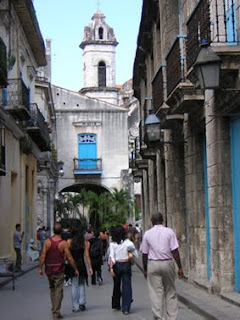


Christopher Columbus arrived in Cuba on October 28th, 1492 and he was amazed by the natural beauty of the region of Baracoa, in the northern shore of Cuba for after a while he wrote in his diary 'This is the loveliest land ever beheld by human eyes'.
Conquest and colonization came next with the foundation of the first settlements1 —called villas— by Diego Velazquez along the island which had a primitive lay out based mostly on geographical features and strategic and economic criteria as no urban structure existed when the Spaniards came to the island.
An unprecedented process —since the Roman Empire— approached from the standpoint of urban planning followed: cities, towns, and buildings were shaped only with the European settler’s previous experiences and pragmatism that confronted the need for adaptation to the local climate and the availability of materials that were at hand. The progressive assimilation of the urban and architectural models from the old continent helped mold a vernacular style in time that still today informs the country’s highly distinct architectural heritage spanning over five centuries: a variation on the infinite theme of building. This reflects the country’s development and —together with the mark left by immigrants of diverse origins— defines its cultural identity.
Colonial Urbanism
Genius loci is a Roman concept. According to ancient Roman belief every 'independent' being has its genius, its guardian spirit. This spirit gives life to people and places, accompanies them from birth to death, and determines their character or essence.
Christian Norberg-Schulz: Genius Loci, Towards a Phenomenology of Architecture, p.18
The first settlements originally founded in Cuba from the beginning of the XVI century followed no guidelines at all and had a primitive lay out based either upon topography or on any other feature like the existence of a river or of an aboriginal settlement. The Spaniards soon knew that there was no gold in Cuban mines for which they focused on agriculture and introduced kettle in subsequent trips from Spain.

The content of Colonial Urbanism is part of the book Professor Julio César Pérez Hernández is currently writing about Havana's urbanism
ResponderEliminar